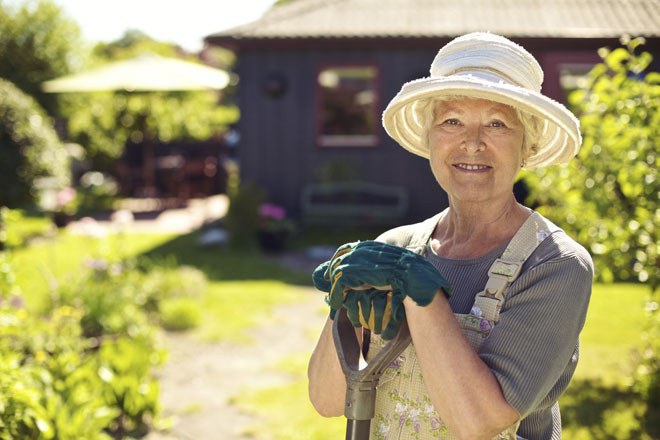By: Bess O'Connor
Dry skin. Grey hair. Brittle bones. Memory loss. These are all signs we associate with old age. Then there’s arguably the most dreaded of all – Alzheimer’s Disease and Dementia (AD).
In Ayurveda, all of these symptoms are associated with a Vata dosha imbalance.
No one really believes that they will lose their scruples come a certain age, but the reality is it happens...A LOT.
The number of people with AD grows each year with millions affected. Statistics from 2015 show that 1 in 9 Americans, age 65 or older and one-third of individuals 85 or older have Alzheimer’s disease (and that’s not including dementia).
Moreover, these numbers are estimated to grow with baby boomers.
The sooner we use preventative medicine to counteract the effects of a Vata imbalance, the better. Ayurveda has some practical and simple solutions to treat and prevent the above symptoms of so-called “old age”.
The Vata dosha is the ‘air and space’ body-mind constitution. It’s qualities are cold, light, dry, irregular, moving, quick and changeable – pretty much the qualities of wind if you think about it.
This age old wisdom teaches us that beyond our personal dosha (mind-body type) we all have doshic stages throughout our lifetime.
As a baby and young child, we are in our Kapha phase. Kapha is the ‘water and earth’ dosha. If you think about a small child, they have that soft, hydrated baby skin and sweet chubbiness that warrants all day cuddling.
The next stage in life is the teen and young adult years or the ‘Pitta phase’ (fire and water. Adolescence is filled with Pitta fire – rebelliousness, inflammatory responses (i.e. acne and a fiery attitude). Our overly dramatic and emotional responses at that stage are a clear combination of fire (excessive and dramatic) and water (emotion).
After that it’s adulthood. Every year that goes by, Vata becomes more prevalent if we don’t take the necessary and preventative measures to balance excess Vata. In fact, an imbalanced Vata dosha is often referred to as being ‘Vata deranged’. It’s no coincidence that this stage in life can bring about AD and other neurodegenerative disorders.
No matter your dosha, we should all strive to balance Vata. Here are some ayurvedic ways to do so:
Still the mind. The number one prescribed remedy for a Vata imbalance is meditation. Using a mantra during meditation can make it easier for the mind to center. If your mind is going at a rate of a thousand miles a minute, a simple yet profound “So Hum” mantra can be a returning point for an overactive mind.
1. Simply close the eyes and breathe in deeply and slowly while mentally ‘saying’ the sound “so” and on the exhale, hear the sound “hum”.
2. Repeat the “so hum” mantra for 20-30 minutes twice daily.
3. If your mind begins to wander, gently bring your focus back to the mantra and the breath.
Warm your veggies. According to ayurveda, a completely raw food diet is actually not recommended for the Vata dosha. Vatas are known to have a sensitive digestive system. Raw foods are cooling and more challenging to break down, which can deplete the agni (digestive fire).
I’m not saying cook your food to death, but warming at least some of your food and incorporating warming spices into your diet can help by beginning the breaking down process of the food as well as providing some much needed warmth to a weak agni.
Oil, oil and more oil. It may seem too simple to make a big difference, but oil is seriously a magic potion. Vatas don’t just suffer from dry skin, they also tend towards a dry digestive system, nervous system and brain.
Nervous system disorders or VataVyadhi in Sanskrit, are thrown out of balance by the Vata ‘wind’ energy that moves throughout the brain and the nerves, controlling both voluntary and involuntary movement. Taking oil internally as well as slathering it on topically can be a game changer. It is prescribed to place oil on the entire body from scalp to feet and everywhere in between and also to taken internally.
1. Sesame oil is a big one for Vata’s because of its warming abilities.
2. Coconut oil is great for brain function, but by itself may be too cooling. Take with cayenne pepper or other warming herbs or mix with heavier oil such as sesame.
3. Extra virgin olive oil for both skin and internally.
4. Ghee, though not technically an oil, is used as such and a very important Ayurvedic food for the Vata dosha.
Ayurvedic healing herbs. Researchers are using ayurvedic medicinal plants called 'nervines' and their constituents to strengthen the nervous system and restore memory. These studies show the presence of many important phytochemical compounds, such as lignans, flavonoids, tannins, polyphenols, sterols, and alkaloids that are presenting a wide range of benefits.
The below ayurvedic medicinal plants have shown promise in reversing Alzheimer’s and dementia.
- Ashwagandha (Withania somnifera)
- Turmeric (Curcuma longa)
- Brahmi (Bacopa monnieri)
- Shankhpushpi (Convolvulus pluricaulis)
- Gotu kola (Centella asiatica)
- Jyotishmati (Celastrus paniculatus)
- Jatamansi (Nardostachys jatamansi)
- Guggulu











